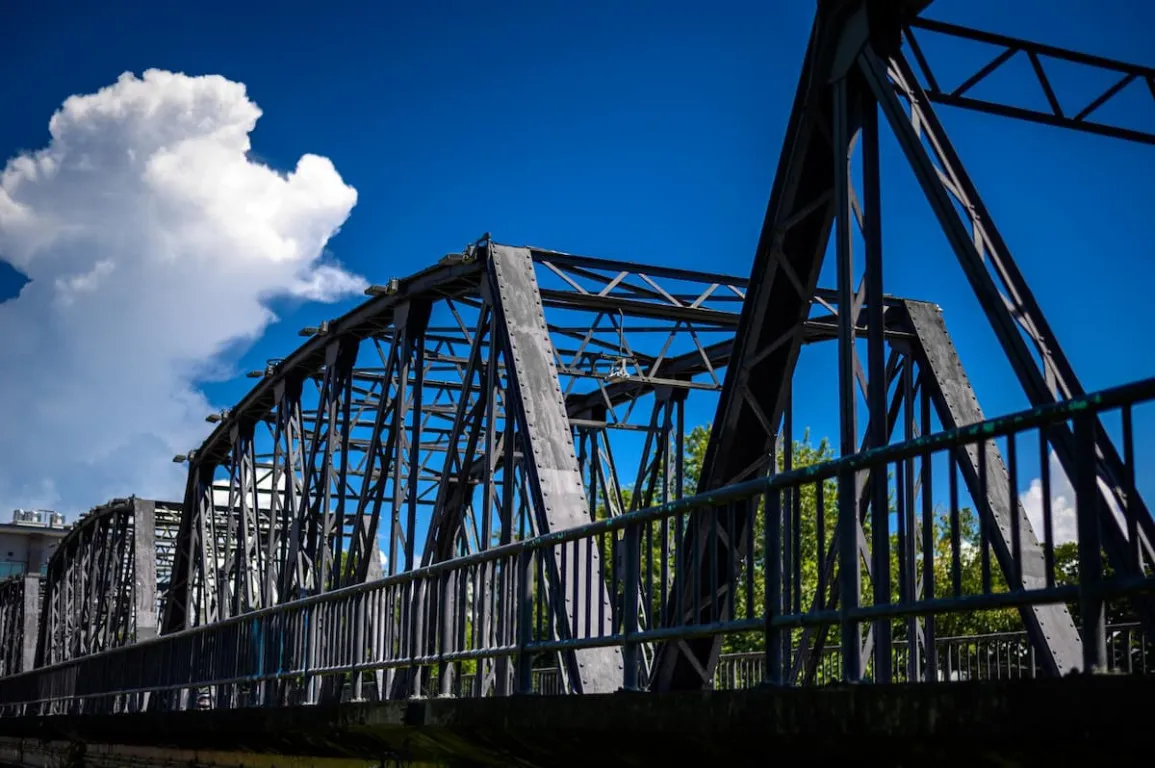A bridge is a structure built to connect two points separated by a river, valley, road, or other obstacles. Given its crucial role in facilitating interregional transportation, learning how to build a bridge is essential for those engaged in the construction industry.
Beyond installing key structural components such as piles and bridge girders, there are many other steps that must be taken to ensure the bridge functions properly. To understand the complete bridge construction process, continue reading this article!
Complete Bridge Construction Process
Building a bridge is a complex process that involves multiple construction stages. Each step in bridge construction must be carried out systematically while considering technical, environmental, and other factors. Below are the main steps in the bridge construction process.
1. Bridge Structure Work
The process of building a bridge begins with structural work. This includes activities, such as excavation and constructing abutments, installing reinforcement bars and girders, pouring concrete with ready-mix, and more.
2. Bridge Approach Work
The next step in bridge construction is working on the approaches. The bridge approach is the roadway that connects the bridge to the main road on both ends. This process includes landfilling, paving, and installing support systems to ensure a smooth vehicle transition from the road to the bridge.
Read also: Bridge Construction Types and Foundation Varieties
3. Road Drainage Work
A drainage system is required to cast rainwater away so it does not flood on the bridge surface and damage the structure. Typically, reinforced concrete drainage channels are built along the bridge with sufficient slope to ensure smooth water flow to the disposal area.
4. Supplementary Work
The various bridge construction steps above require support from supplementary work for bridge finishing. This includes transporting building materials, painting road markings, installing signs, and providing lighting along the bridge.
Bridge Construction Materials
After learning how to build a bridge, it is essential to understand the building materials required. The type of materials used depends on the bridge’s design and structural needs. Below are some of the main materials commonly used in bridge construction.
1. Ready-Mix Concrete
The primary material in modern bridge construction is concrete and steel. Ready-mix concrete, which is pre-mixed at a batching plant and meets the specified concrete quality, speeds up the construction process as it eliminates the need for manual mixing on-site.
2. Precast Concrete
Besides ready-mix concrete, precast concrete is also necessary for bridge construction. Precast concrete is pre-molded in a factory and delivered to the site in a ready-to-use form. This method minimizes technical errors and accelerates project completion.
3. Steel Framework
The next essential bridge-building material is a steel framework. Steel structures allow for flexible designs and good resistance to dynamic loads, such as wind and earthquakes. Additionally, steel can be assembled modularly on-site which makes the installation process faster.
4. Asphalt
Asphalt is used as a surface layer on the bridge road to ensure comfort and safety for users. The asphalt type must be resistant to heavy loads and extreme temperature changes.
Key Factors in Bridge Construction
Bridge construction must consider various technical and environmental factors to ensure a safe and durable structure. Errors in planning can lead to premature damage or even bridge collapse. Below are some critical factors to consider when building a bridge.
1. Geotechnical and Seismic Data
Geotechnical analysis is essential to determine the soil characteristics at the project site, such as load-bearing capacity and potential soil movement. Additionally, seismic data is crucial for assessing the bridge’s earthquake resistance.
2. Strong Foundation
A solid foundation is necessary to support the bridge structure and prevent displacement or settlement. The type of foundation used depends on soil characteristics, whether using shallow or deep foundations. If a deep foundation is required, pile driving must be implemented.
3. Water Flow
Since bridges are often built over rivers, analyzing water flow is crucial in the planning process. Factors, such as water level changes, sedimentation, and flood risks must be considered to ensure the bridge remains stable. Additionally, the drainage system must naturally flow into the river.
4. Spun Pile or Deep Foundation Requirements
Pile foundations are used to strengthen the bridge’s base, especially in areas with low soil-bearing capacity. Piles can be made of concrete or steel.
Read also: Spun Pile: Definition, Functions, Advantages, & Types
That concludes the discussion on how to build a bridge and the materials required for construction. Building a bridge requires precision and thorough planning. Therefore, bridge construction management must select the right materials and structures that suit the terrain and project needs.
For public infrastructure projects such as highways, high-rise buildings, connecting bridges, and other structures, always choose high-quality materials with proven strength. For example, use Ready-Mix Concrete and Precast Concrete from Merah Putih Beton.
Merah Putih Beton’s ready-mix concrete products are designed for various applications according to customer specifications. These ready-mix concretes come in multiple grades suitable for different construction needs.
Don’t wait any longer! Contact us now to explore our range of precast and ready-mix concrete options for your bridge construction project. Always use the best building materials for every construction job with Semen Merah Putih!
Read also: PCI Girder: Definition, Function, and Production Process



